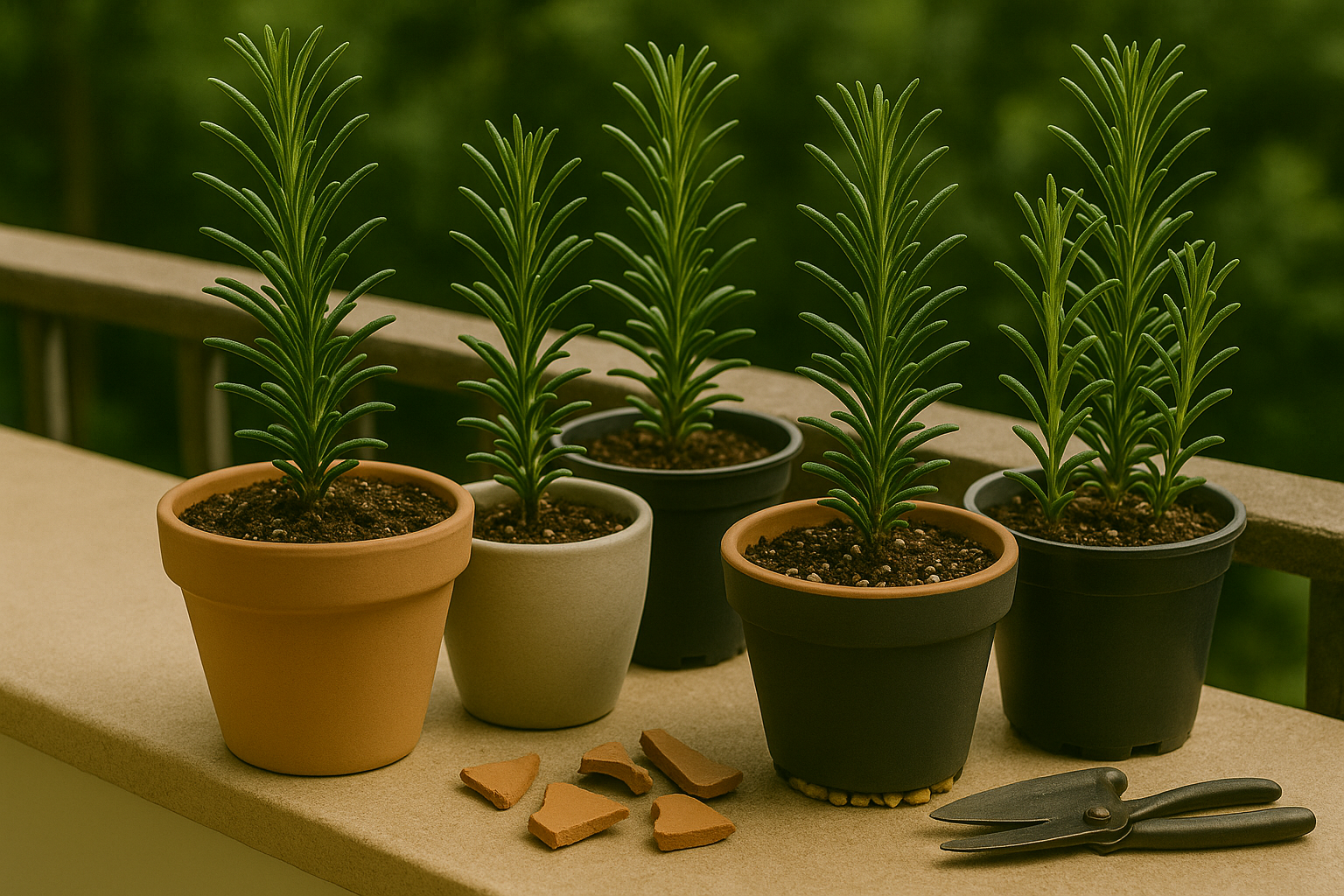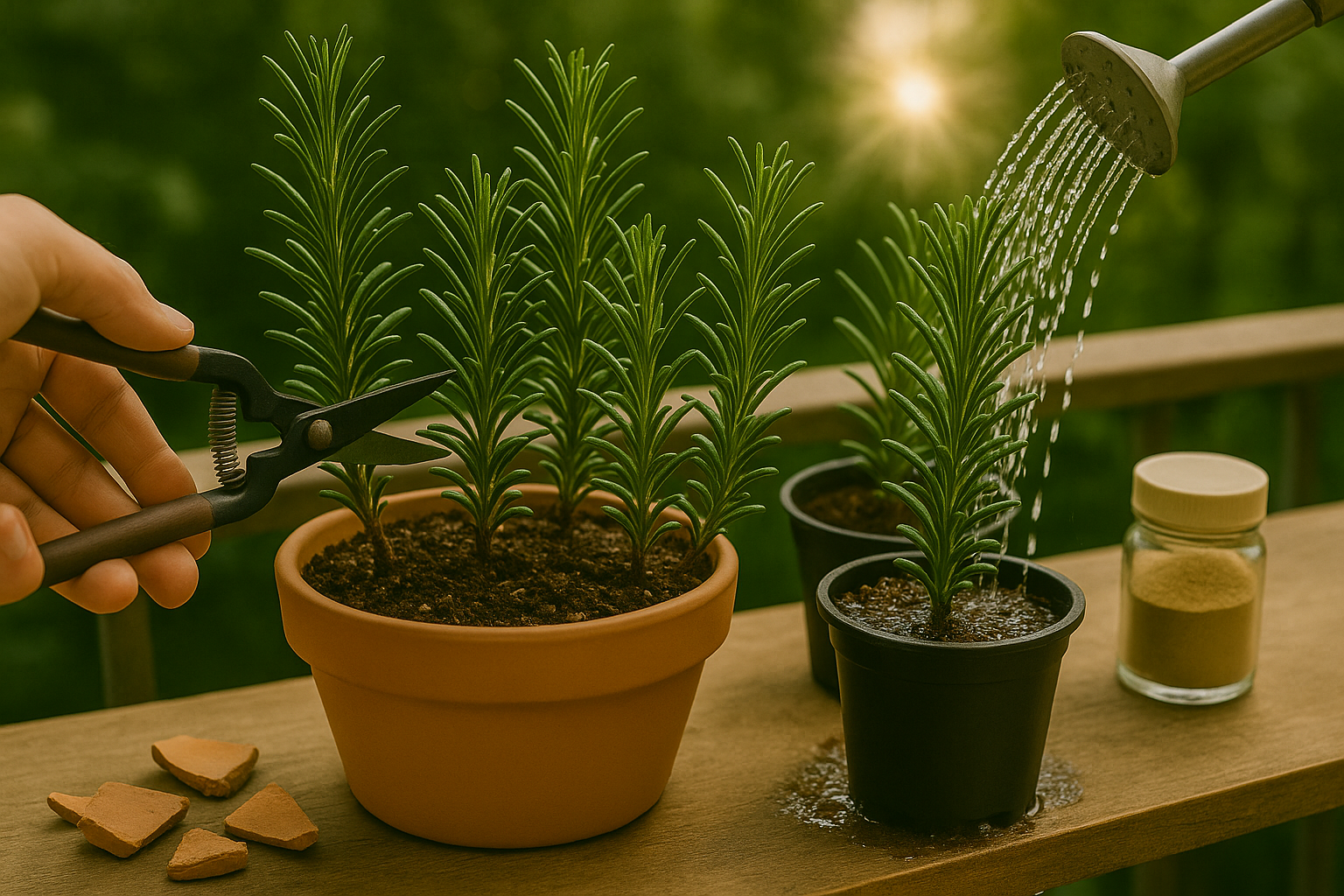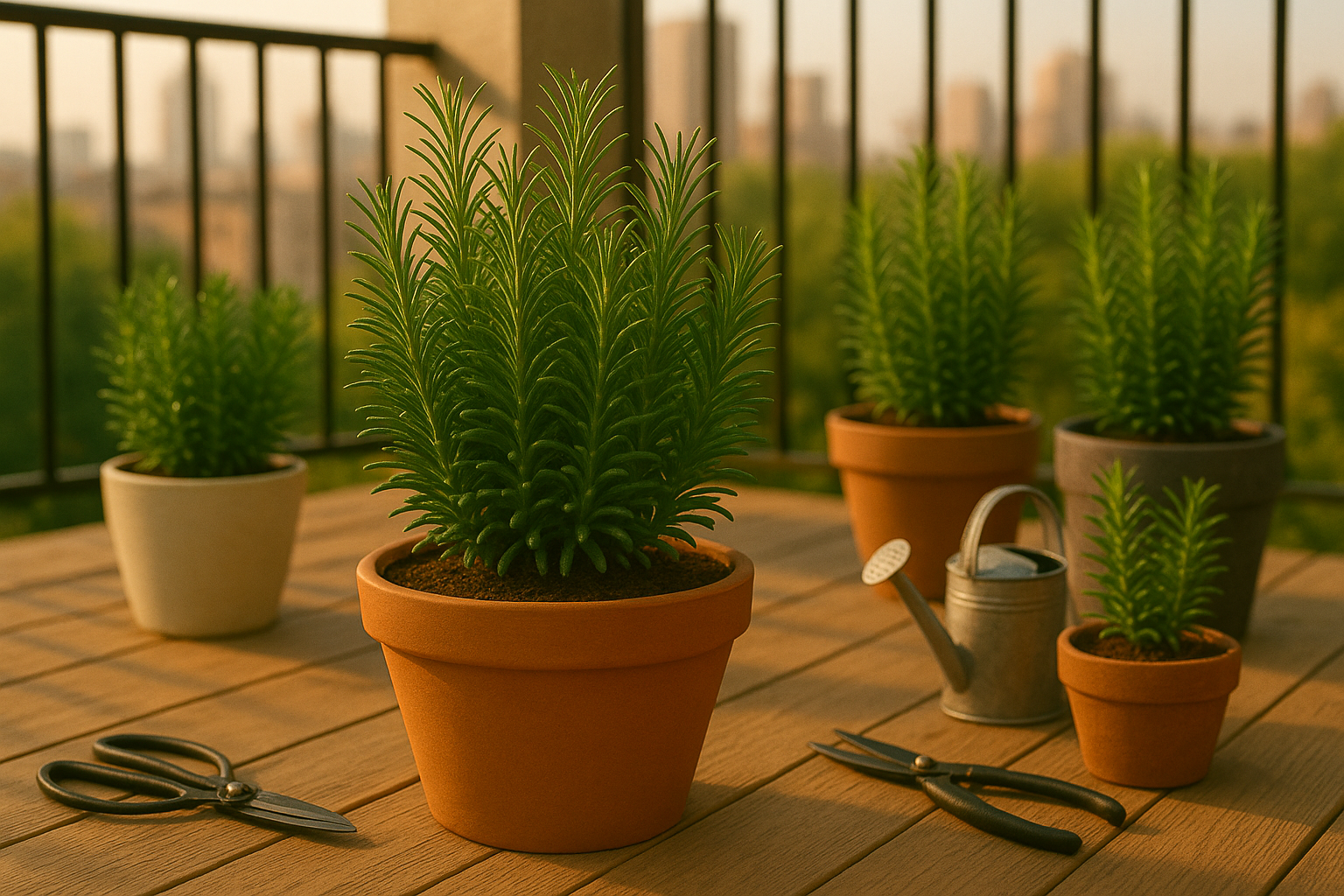Introduction to Growing Rosemary on a Balcony
Growing rosemary on a balcony is becoming increasingly popular among urban gardeners—and for good reason. Rosemary is more than just a pretty herb; it’s valued for its savory flavor, invigorating fragrance, and natural resilience. With its woody stems and needle-like leaves, rosemary thrives in containers where sunlight and airflow are abundant, making it perfect for balcony spaces.
Imagine snipping fresh rosemary for your roasted potatoes or homemade bread right from your tiny garden oasis—no yard required! Plus, rosemary doubles as a natural air freshener, filling your balcony with a crisp, earthy aroma. Its hardy nature also means less worry about daily maintenance.
Since rosemary prefers well-draining soil and tolerates occasional neglect, it’s ideal for those with busy lifestyles or limited gardening experience. In this article, we’ll walk you through everything you need to know for successful balcony rosemary growing.
We’ll start with the basics—choosing the right container and soil—then cover light and watering needs, pruning tips, and creative ways to use your harvest. Whether you’re a seasoned gardener or a total beginner, you’ll discover just how rewarding and simple it is to grow rosemary on your balcony.
Choosing the Right Rosemary Plant and Container

When growing rosemary in containers, selecting the right variety makes a big difference in how well your plants will thrive. Compact and dwarf varieties like ‘Blue Boy,’ ‘Prostratus,’ or ‘Golden Rain’ are especially suited for pots because they stay manageable and bushy without becoming too leggy or sprawling.
Start with healthy starter plants from a reputable nursery—look for ones with strong, green stems, plenty of new growth, and no signs of wilting, yellowing, or pests. If you’re starting from seed, choose fresh seeds and follow the planting instructions closely. Keep in mind that rosemary germinates slowly, so patience is key!
For the container, opt for pots at least 12 inches wide and deep to give the roots room to spread and prevent crowding. Terracotta or ceramic containers are popular choices because they allow the soil to breathe and drain well, but sturdy plastic pots with drainage holes work too. Proper drainage is essential: a soggy environment can quickly lead to root rot, so make sure there are holes at the bottom of your pot. You might also add a layer of gravel or broken pottery shards to improve drainage further.
If you want to plant multiple rosemary plants in one container, space them at least 12–18 inches apart to allow for air circulation and healthy growth. Cramped pots not only stunt the plants but also increase the risk of fungal issues.
By choosing the right variety, checking plant health, and using an appropriate container, you’ll set your rosemary up for a productive, fragrant container garden that thrives all season.
Providing Optimal Growing Conditions
Rosemary thrives when given plenty of sunlight—at least six to eight hours per day—so place your pots where they’ll get the most direct light. South- or west-facing balconies usually work best. If your balcony is shaded for much of the day, consider rotating the plant’s position or supplementing with a grow light to promote healthy, bushy growth.
Rosemary prefers moderate temperatures, ideally between 60°F and 75°F (15°C to 24°C). Although it can tolerate occasional dips, frost can damage the leaves and roots. During colder months, watch for nighttime lows below 40°F (4°C). If possible, move pots indoors to a sunny window or use a protective cover made from fabric or plastic sheeting.
Hot, humid summers can also stress rosemary, so place it outdoors in an area with good airflow—not crowded by walls or other plants—to prevent mildew or fungal problems. To keep air circulating, leave a few inches between containers and trim crowded stems regularly.
If extreme weather is in the forecast, such as storms or heatwaves, temporarily move rosemary away from balcony rails and strong winds to reduce stress. Lightweight pots make it easier to move plants as seasons change. Grouping rosemary with similar herbs can create a beneficial microclimate, but be sure to leave ample space for breathing room.
Proactive care and a watchful eye—especially when the weather fluctuates—will keep your rosemary healthy and productive throughout the year.
Potting Mix, Soil, and Drainage Essentials
Choosing the right potting mix and understanding soil drainage are crucial for healthy plants, especially in container gardening. Ideally, a potting mix should be well-draining and slightly alkaline, allowing water to flow through easily while providing roots with essential nutrients and oxygen.
Avoid using garden soil in pots since it can compact, hold too much moisture, and bring in pests. Always opt for a commercial potting mix labeled as well-draining, or make your own by mixing peat-free compost with perlite or coarse sand.
Drainage is essential because standing water leads to root rot and fungal growth. Always select containers with sufficient drainage holes in the bottom.
You can add a layer of small rocks or broken pottery shards at the base of the pot, but more importantly, ensure the pot isn’t sitting in a saucer full of excess water. When filling containers, avoid packing soil too tightly—looser soil promotes airflow and drainage.
If you notice that water pools on top or drains slowly, try repotting with a lighter mix or increasing drainage additives like perlite.
Also, consider whether your plant needs a bigger home. Roots peeking through drainage holes, stunted growth, or soil drying out unusually fast all signal it’s time to repot into a container one or two inches wider than the current one.
Gently loosen root balls when transferring and refill with fresh, well-aerated mix to give your plant the best start in its new space. Regular checks and seasonal top-ups of potting mix will keep soil quality high and drainage effective—key steps for thriving container plants.
Watering, Fertilizing, and General Care

Proper care is key to growing healthy rosemary on your balcony, and it starts with smart watering. Rosemary prefers its soil on the dry side—aim to water thoroughly once the top inch of soil feels dry, usually every one to two weeks depending on the weather and the size of your container. Be mindful not to overwater; soggy soil or yellowing, limp leaves are classic signs of too much moisture, while drooping, brittle foliage signals the plant is too dry.
When watering, saturate the soil slowly until water drains from the pot’s bottom—this encourages healthy root growth and prevents dry pockets. Use pots with drainage holes and avoid letting the plant sit in a saucer of standing water.
For fertilizing, rosemary isn’t a heavy feeder, but a light dose of balanced, organic fertilizer (such as a 10-10-10 or fish emulsion) every four to six weeks during the growing season (spring through early fall) is beneficial. Skip fertilizing in winter, as growth slows down and extra nutrients can stress the plant.
General care is just as important: place your pot in a spot that gets at least six hours of sunlight daily and turn the pot occasionally so all sides get even exposure. Prune the top stems regularly, pinching or snipping just above a leaf pair—this encourages bushier growth, keeps the plant tidy, and allows you to harvest fresh rosemary for cooking. Cut away any dead or woody stems in spring to keep your plant healthy.
Remember, rosemary likes airflow, so avoid crowding it with other plants. With attention to these simple routines, your balcony rosemary will thrive, bringing both fresh flavor and a fragrant, Mediterranean touch to your home.
Overwintering, Problems, and Pests
When winter temperatures drop below freezing, rosemary grown in pots on balconies needs extra care to survive. Protect your plant by moving containers indoors to a well-lit room, preferably by a south-facing window, or to a cool, frost-free hallway.
If bringing the plant inside isn’t an option, insulate the pot with bubble wrap, burlap, or thick old towels to shield the roots from cold snaps. Make sure the soil stays just damp—never soggy—to avoid root rot.
Overwatering during the cold months often leads to root rot or fungal diseases. Let the top inch of soil dry out before watering again, and ensure the pot drains well.
Common Pests and Diseases
Powdery mildew and aphids are common pests in balcony gardens. Increase airflow by spacing plants properly and trimming crowded stems. Check regularly for sticky residues or discoloration on the leaves.
Natural Pest Management
- Rinse aphids off with a gentle blast of water.
- Use a mild soap spray made with one teaspoon of natural dish soap per quart of water.
- Introduce beneficial insects like ladybugs or gently brush leaves to dislodge pests.
Fungal Disease Control
If fungus or mildew appears, remove affected leaves promptly and spray the plant with a mix of water and baking soda (one teaspoon per quart) to discourage further fungus growth.
By staying vigilant and acting early, you can keep your rosemary healthy through winter and ready for spring growth.
Harvesting and Using Your Balcony Rosemary
Harvesting rosemary from your balcony is all about timing and technique to maximize flavor and ensure healthy growth. The best time to cut sprigs is in the morning, after the dew has dried but before the midday sun—this is when the essential oils are most concentrated, giving you the best aroma and taste.
Always use sharp, clean scissors or pruning shears to snip off stems, taking only what you need plus a little extra for storage. To encourage a bushier plant, make your cuts just above a leaf node—where two leaves meet the stem. This “pinching back” helps keep the plant compact and full while preventing it from becoming leggy or woody. Avoid cutting more than one-third of the plant at any time, as this can stress your rosemary.
Using Fresh Rosemary in the Kitchen
Fresh rosemary is endlessly versatile in the kitchen:
- Toss whole sprigs onto roasted potatoes or chicken for an instant flavor boost.
- Infuse olive oil with a few branches to add herbal notes.
- Finely chop leaves into focaccia dough for a fragrant Mediterranean touch.
Storing Extra Rosemary
When you have extra rosemary, it’s easy to store:
- Wrap sprigs in a damp paper towel and place them in a zip-top bag in your refrigerator, where they’ll stay fresh for up to two weeks.
- For longer-term storage, hang small bundles upside down in a dry, airy place out of direct sunlight.
- Once fully dried, strip the leaves into a jar for a homemade spice that keeps its flavor for months—adding a dash of summer to every meal.
